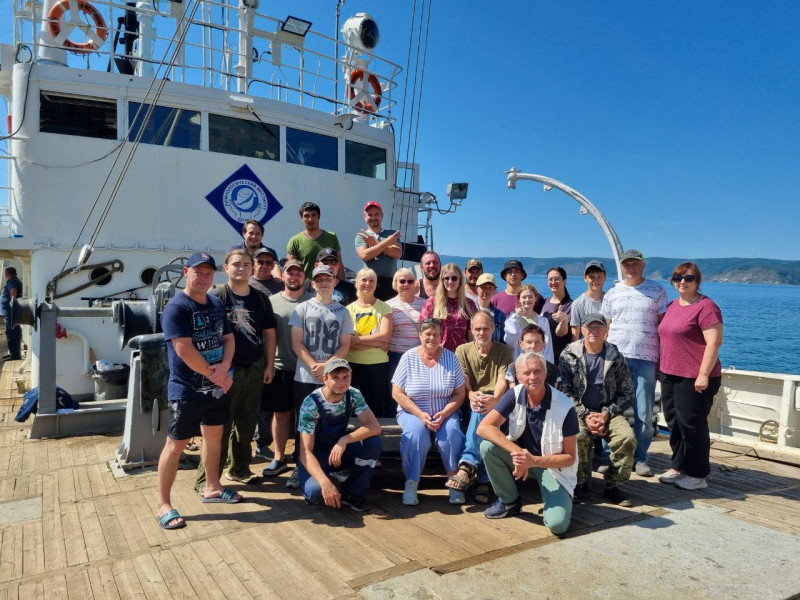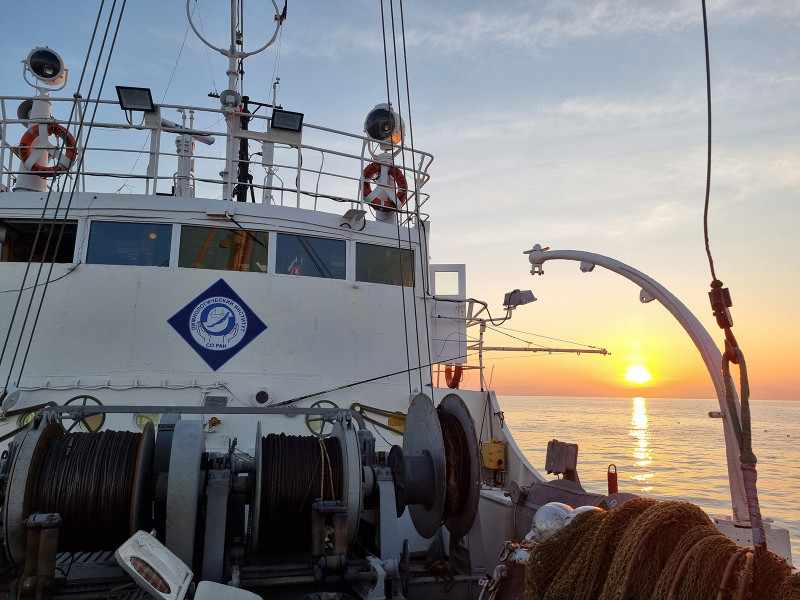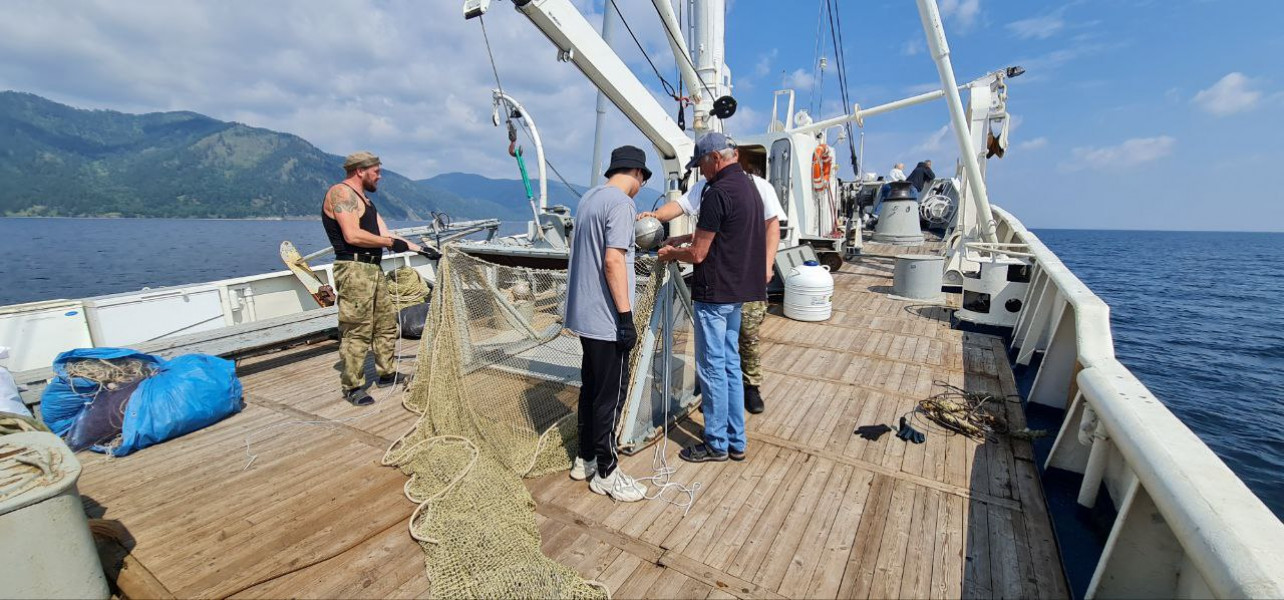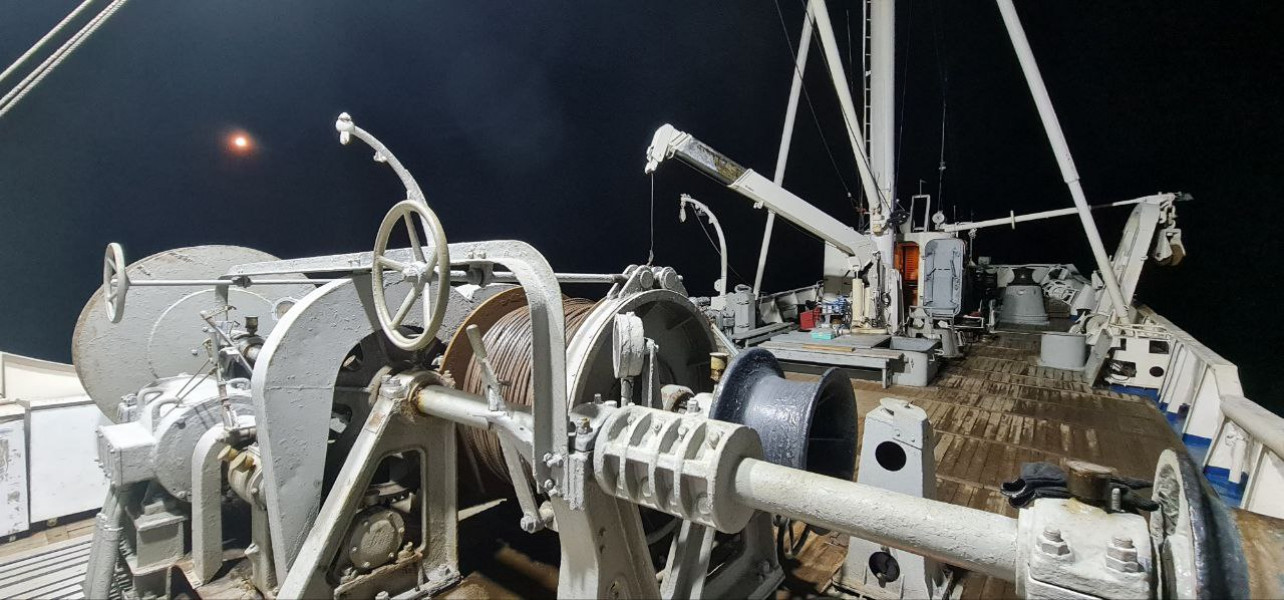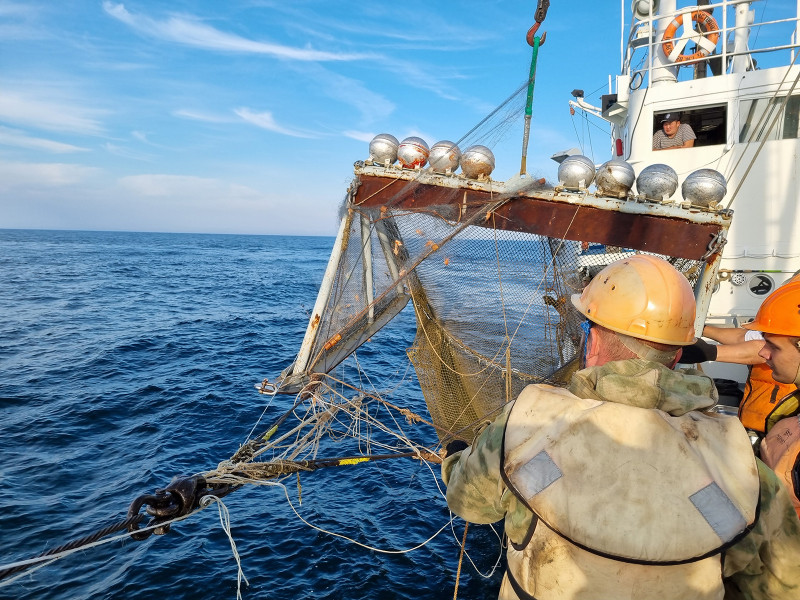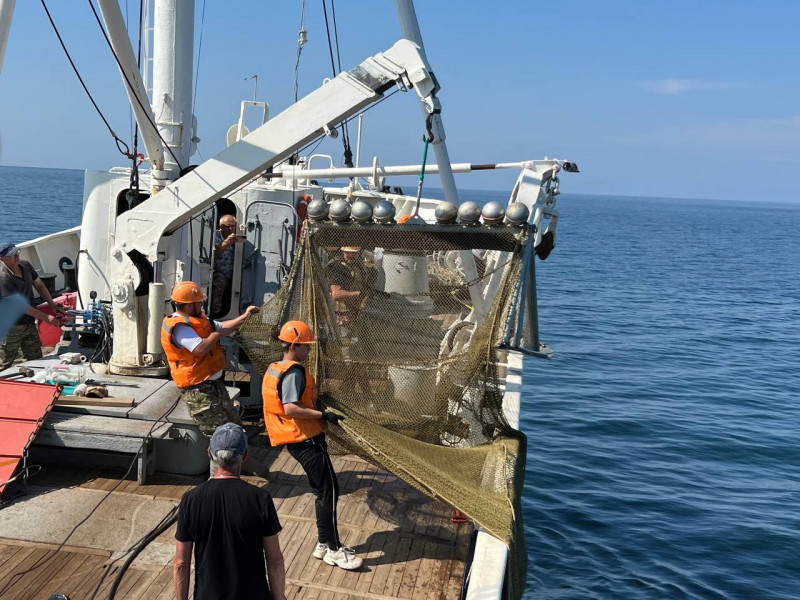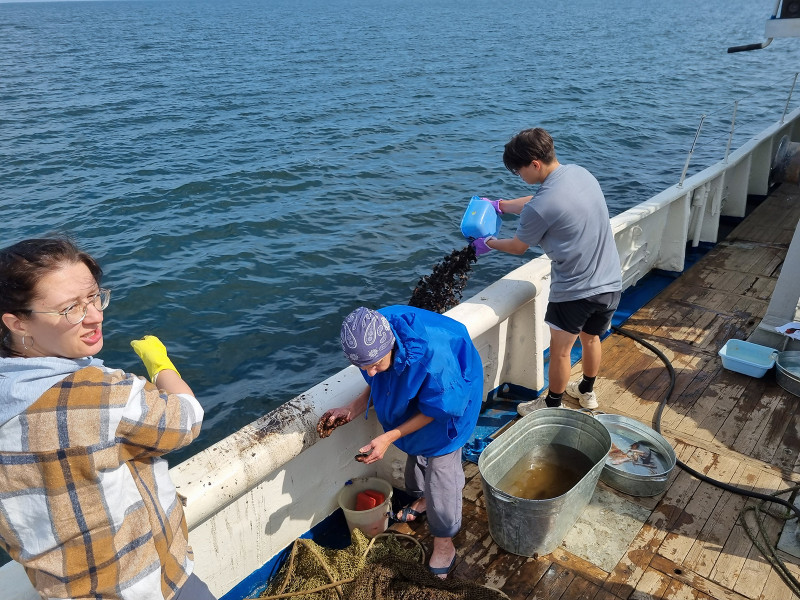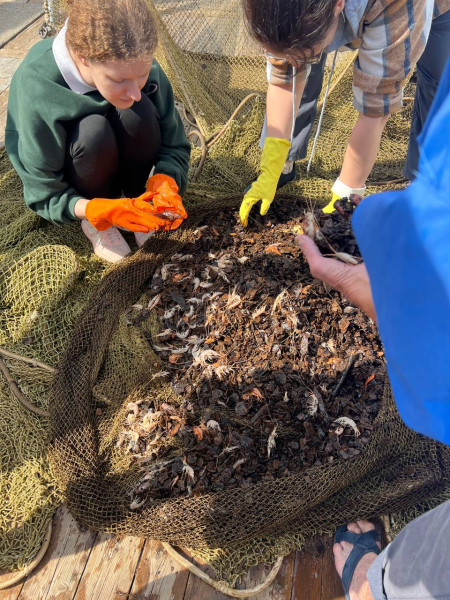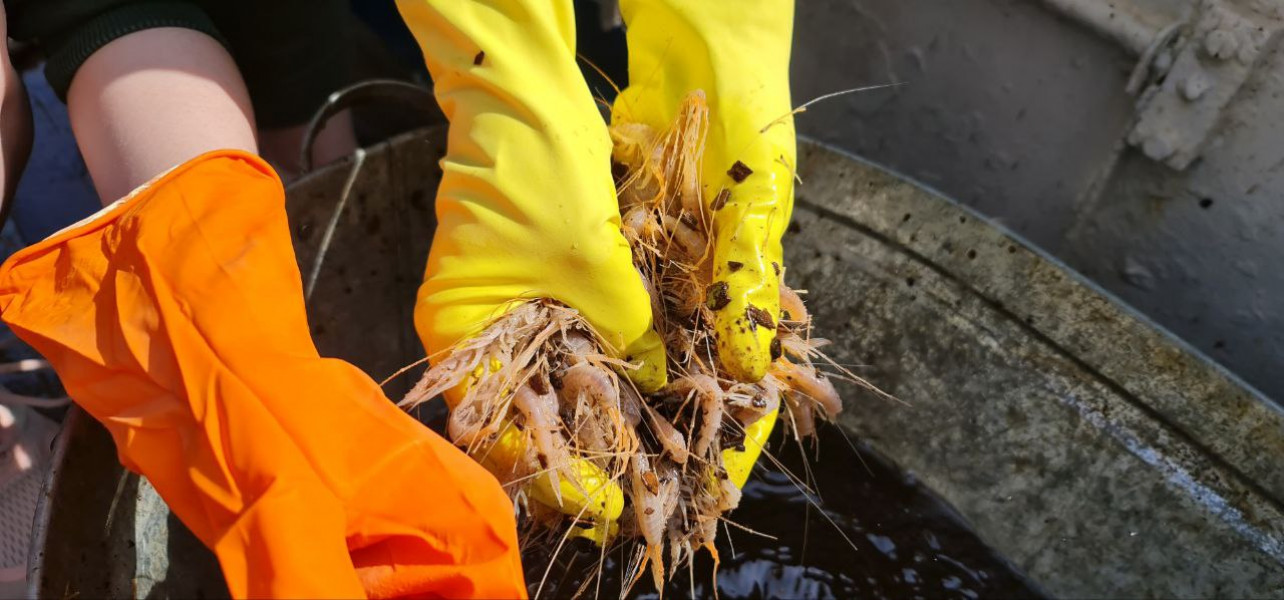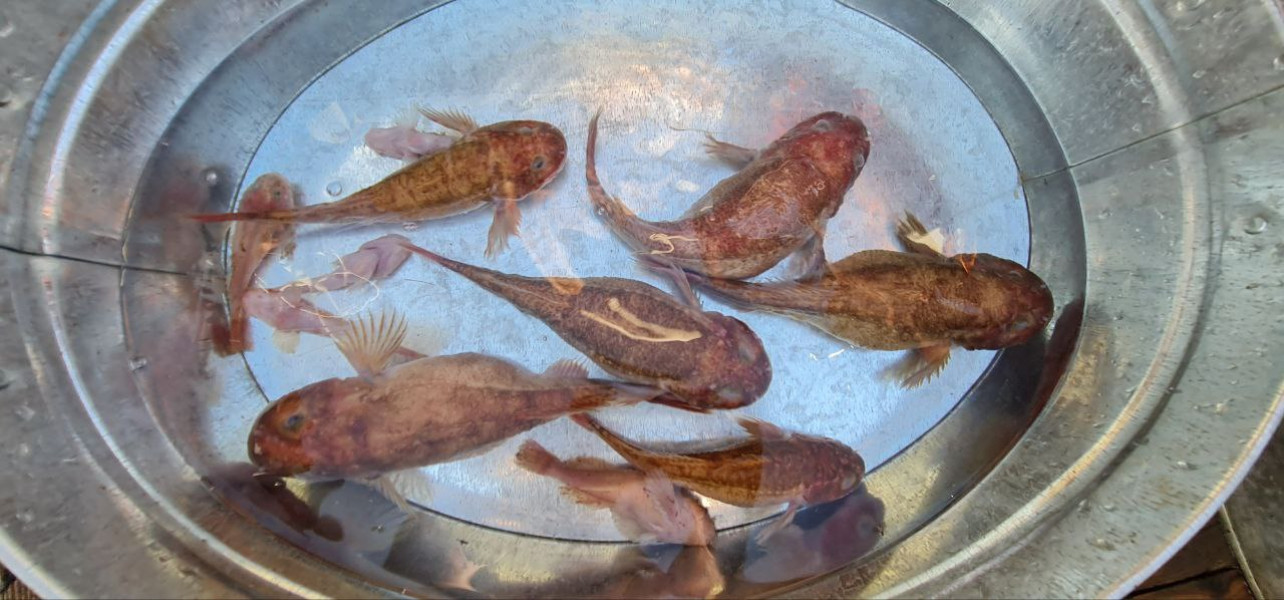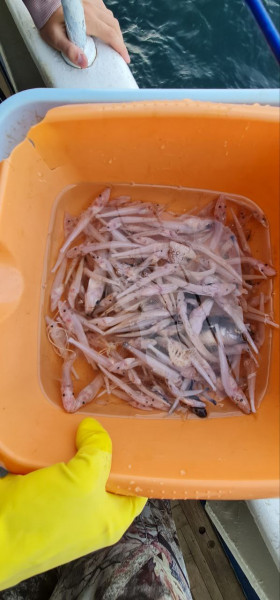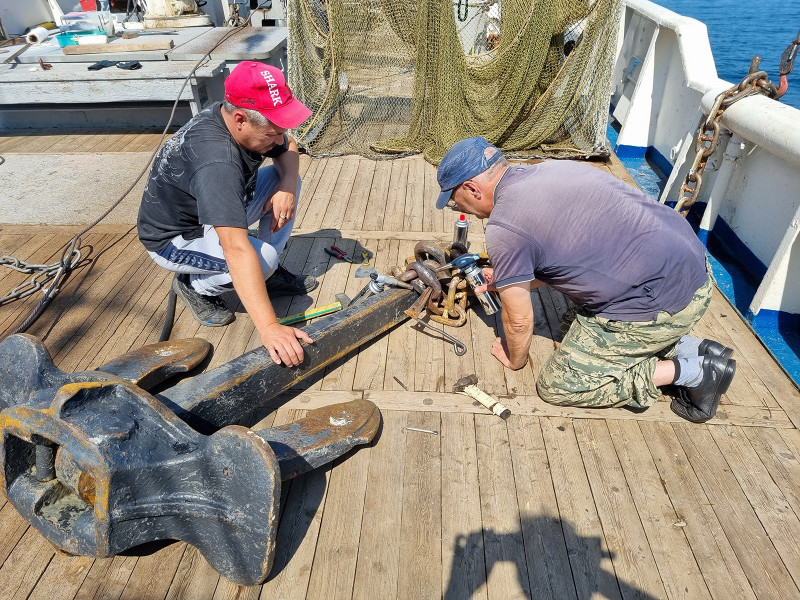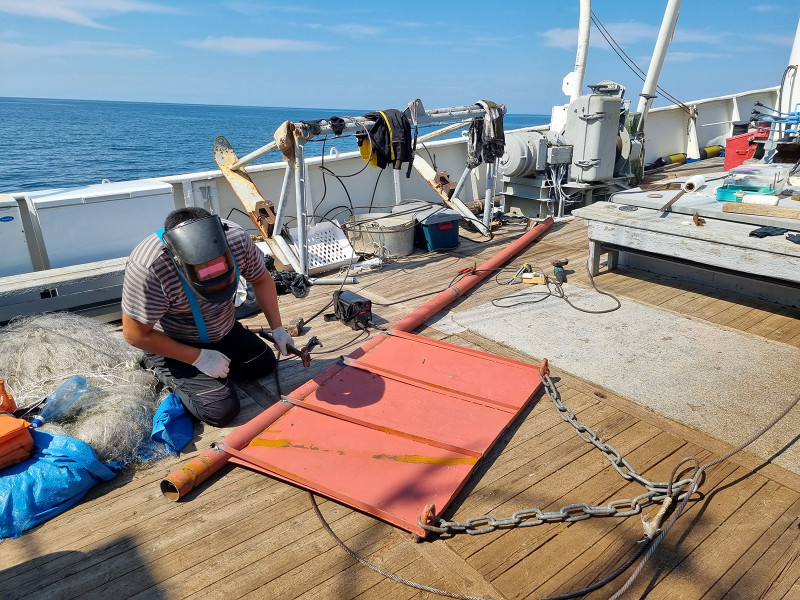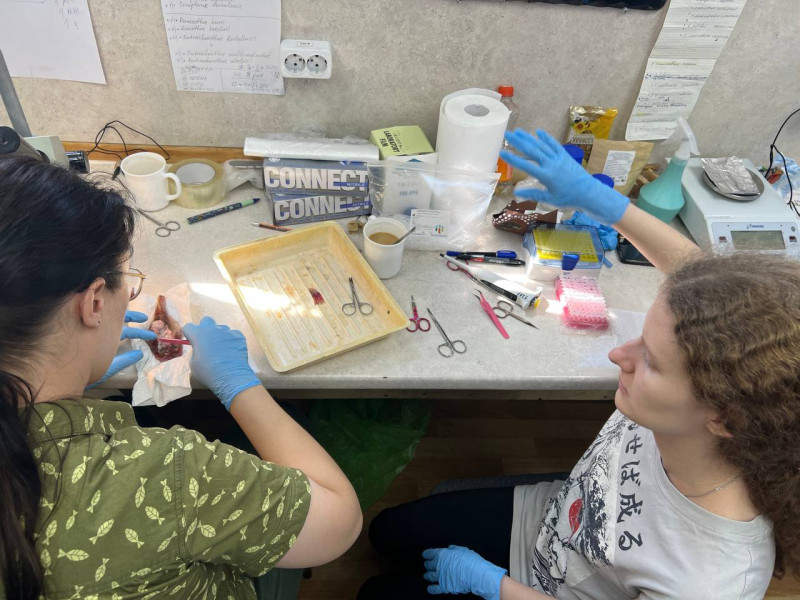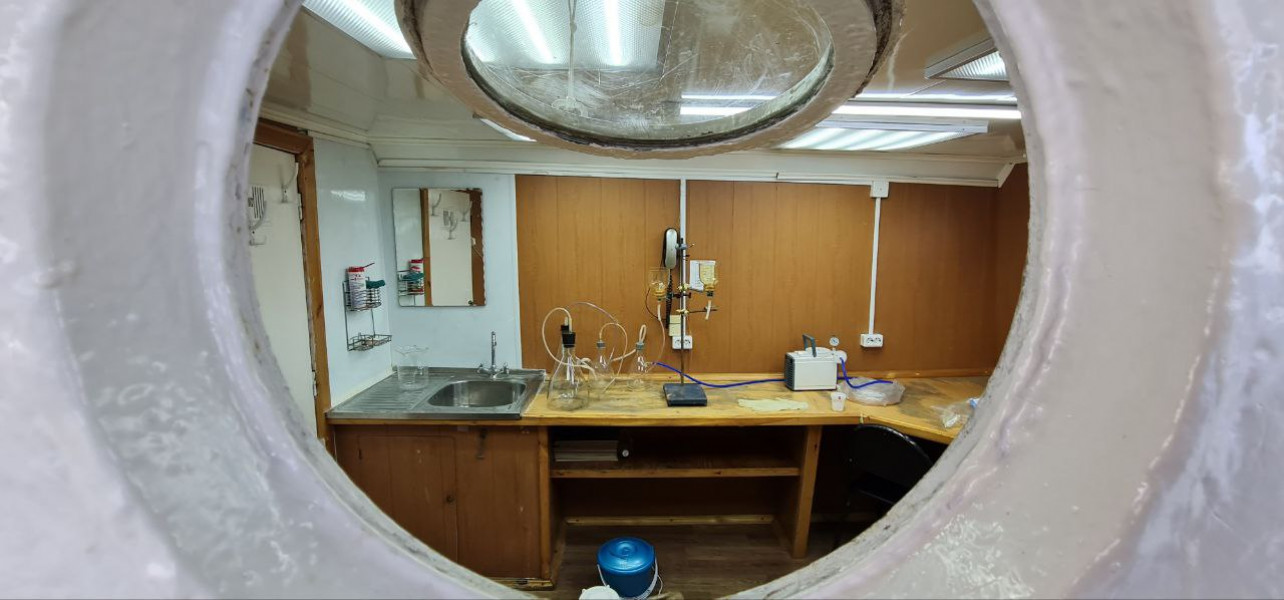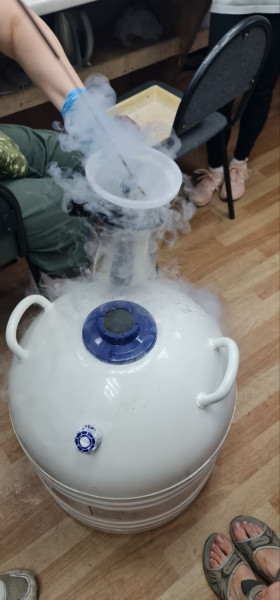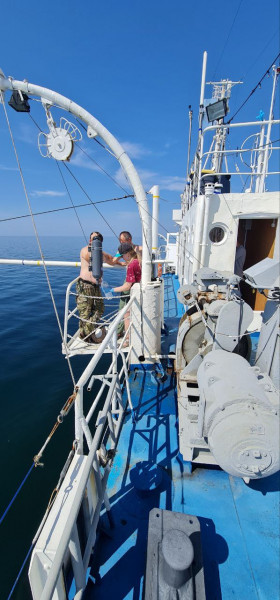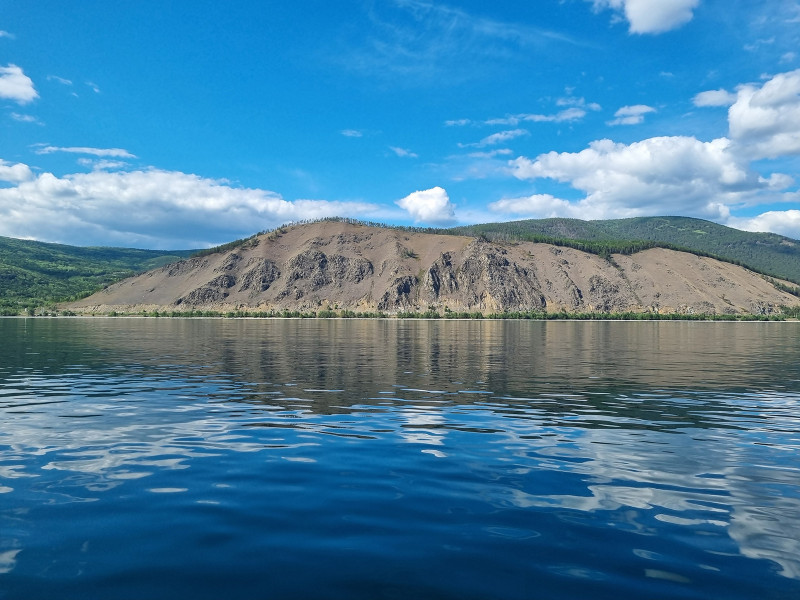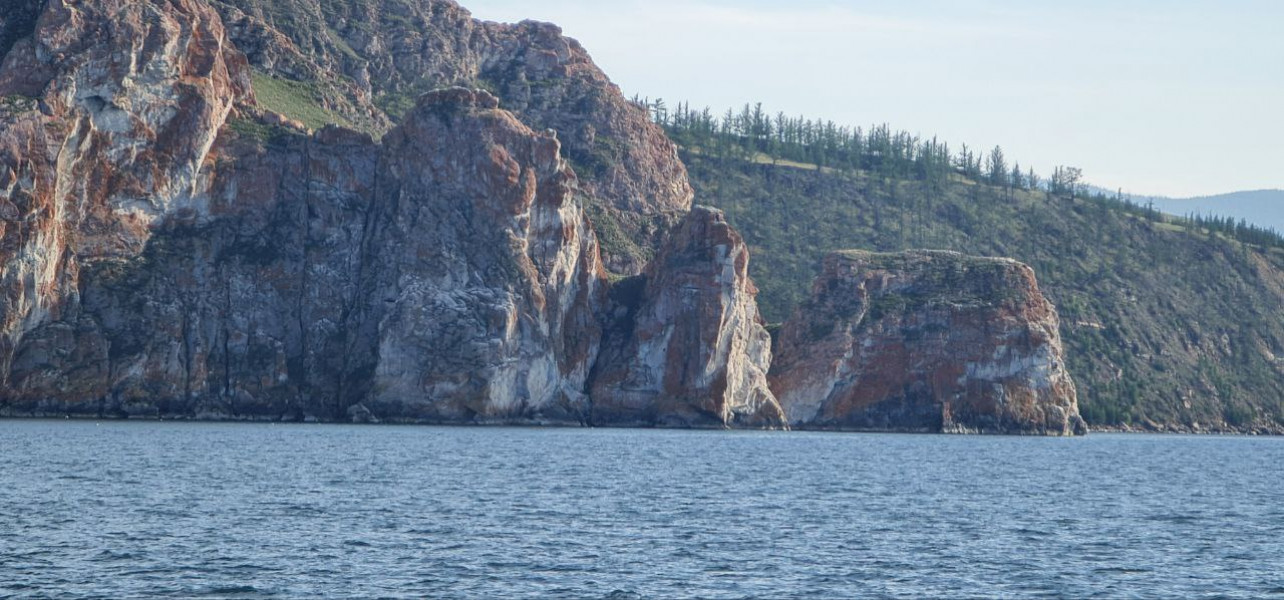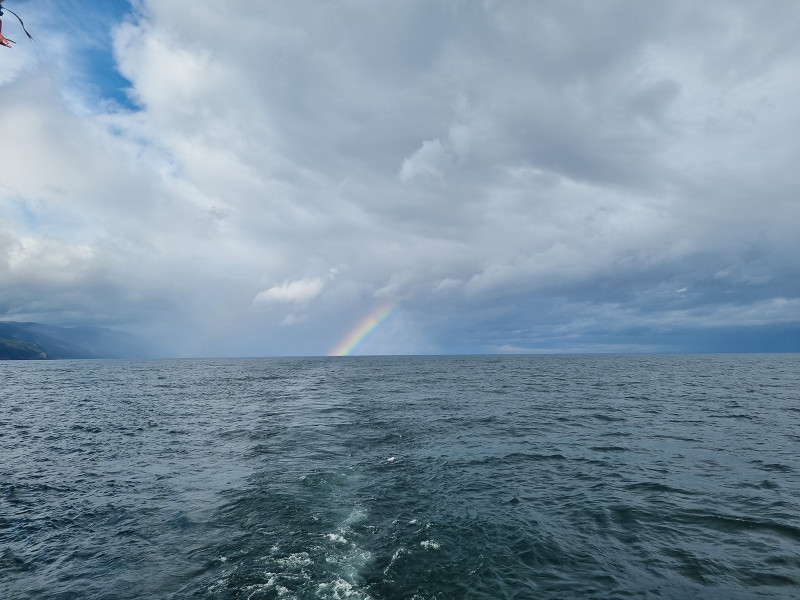Expedition onboard the R/V “G.Yu. Vereshchagin” on August 15-24, 2024
On August 15-24, 2024, a research expedition on board the R/V “G.Yu. Vereshchagin” was conducted with the main purpose to study the deep-water fauna of Lake Baikal and to apply new methods in the study of taxonomic diversity, speciation, and ecological well-being of deep-water fish of Lake Baikal.
Field work was carried out within the state assignment № 0279-2021-0005 “Study of transformations in the state of water bodies and watercourses of Eastern Siberia in seasonal and long-term aspects in the context of climate change, geological environment, and anthropogenic loads” (led by Fedotov A.P.).
During the expedition, a total of 15 productive trawls were made, a representative amount of material (samples) of abyssal and pelagic cottid species inhabiting different areas and basins of Lake Baikal was collected. In the region of Peschanaya Bay and Bolshiye Koty settlement, a diving collection of coastal fish species was made.
The samples were collected in order to:
- Study of adaptive adjustments of bottom cottids (Cottoidei) to inhabiting depths of over 500 m (up to the maximum lake depths) in comparison with pelagic and bottom coastal species, as well as evaluation of the efficiency of the following biomarkers: morpho-functional characteristics of sensory systems, blood cytometric parameters, transcriptome analysis, expression of genes responsible for adaptive reactions, telomere length, and telomerase activity. For control samples, the response norm of the listed parameters is defined on the basis of potential biomarkers. In total, more than 3000 samples of different tissues were fixed for different types of analyses. Blood, brain, sensory epithelium, heart, liver, and muscle of the following cottid species were fixed under field conditions:
Cottinella boulengeri (Short-headed sculpin) - 24 pcs.;
Abyssocottus korotneffi (Small-eyed sculpin) - 16 pcs.;
Limnocottus griseus (Deepwater sculpin) - 14 pcs.;
Neocottus thermalis (Warm-water sculpin) - 10 pcs.;
Limnocottus pallidus (Narrow sculpin) - 13 pcs.;
Comephorus baicalensis (Big Baikal oilfish) - 12 pcs.;
Comephorus dybowskii (Little Baikal oilfish) - 10 pcs.;
Batrachocottus nikolskii (Fatty sculpin) - 14 pcs.;
Batrachocottus multiradiatus (Spotty-fins sculpin) - 12 pcs.;
Paracottus knerii (Stone sculpin) - 9 pcs. - Assess the quantitative and qualitative features of leukocytes, erythrocytes, and hemoglobin structure, blood system reactions to some biotic and abiotic factors, as well as to evaluate the adaptive capabilities of Baikal cottid fish of different ecological groups, material from trawl catches in the Northern, Middle, and Southern basins of the lake was selected. During the field work, the following preparations were made onboard the R/V:
– erythrocyte lysates for hemoglobin structure studies;
– blood smears to study morphology and cytometric parameters of blood cells;
– imprints of hematopoietic organs (spleen and kidneys) to assess the immune status of fish;
- preparations of blood cells and hematopoietic tissues stained with fluorescent dye mitotracker to identify active mitochondria and assess the energy capabilities of the fish organism;
– experiments on the effect of table salt solution (4‰ and 9‰) on blood parameters of some fish species were carried out.
To assess the possibility of using environmental DNA analysis (eDNA) in studying the horizontal distribution of the Baikal oilfish (Comephoridae), water samples were taken in the open zone of the lake above a depth of about 800 meters at horizons of 100, 300, 500, and 700 meters. Sampling was carried out in the northern basin of the lake opposite Chivyrkuisky Bay during day and night. Water samples (~4.5 liters) were filtered through glass filters: the filters were packed in test tubes and frozen. eDNA will be further extracted from the filters. Analysis of the extracts obtained will enable us to assess the degree of sensitivity of eDNA as a potential marker in studying the distribution of pelagic hydrobionts in Lake Baikal.
To investigate eDNA of the river populations of the stone sculpin, Paracottus knerii (Dybowski, 1876), at the tributaries of Lake Baikal, water samples were collected in the estuaries of the Verkhnyaya Angara and Kichera Rivers. Water samples (~4.5 liters) were filtered through glass filters: the filters were packed in tubes and frozen. eDNA will be further isolated from the filters. Extracts will be analyzed by PCR using and sequencing of target DNA fragments. The data obtained will provide supplementary information on the genetic population structure of the stone sculpin.
The expedition members would like to thank the crew of the R/V “G.Yu. Vereshchagin” for their well-coordinated work and assistance in conducting deep-water trawls, and special thanks to the cooks for delicious and varied meals.




